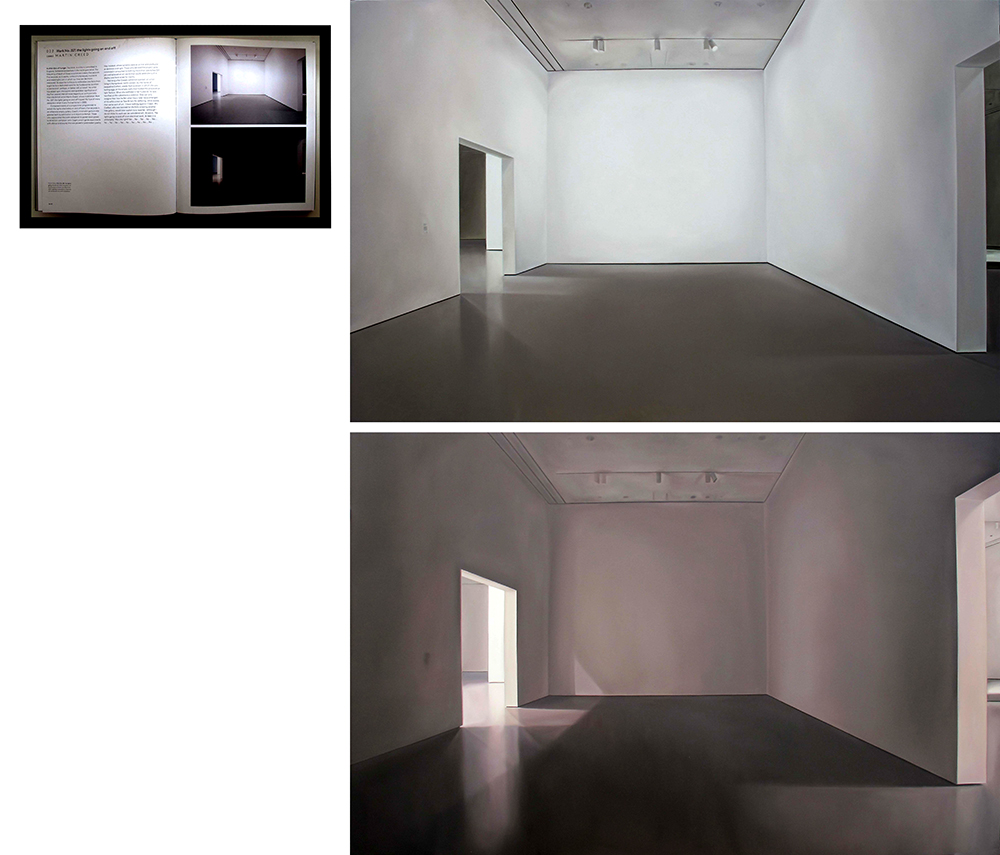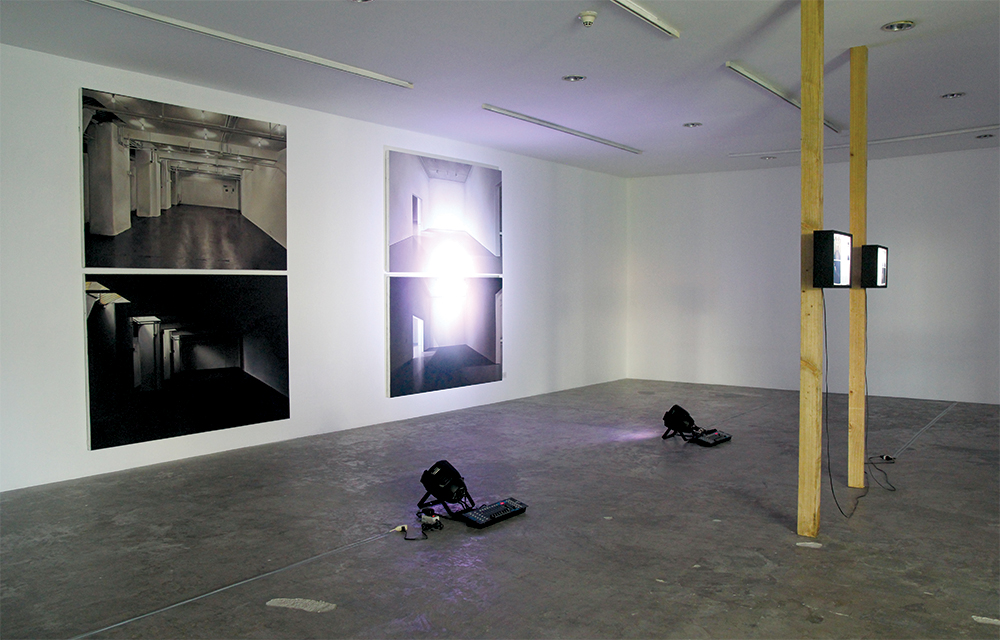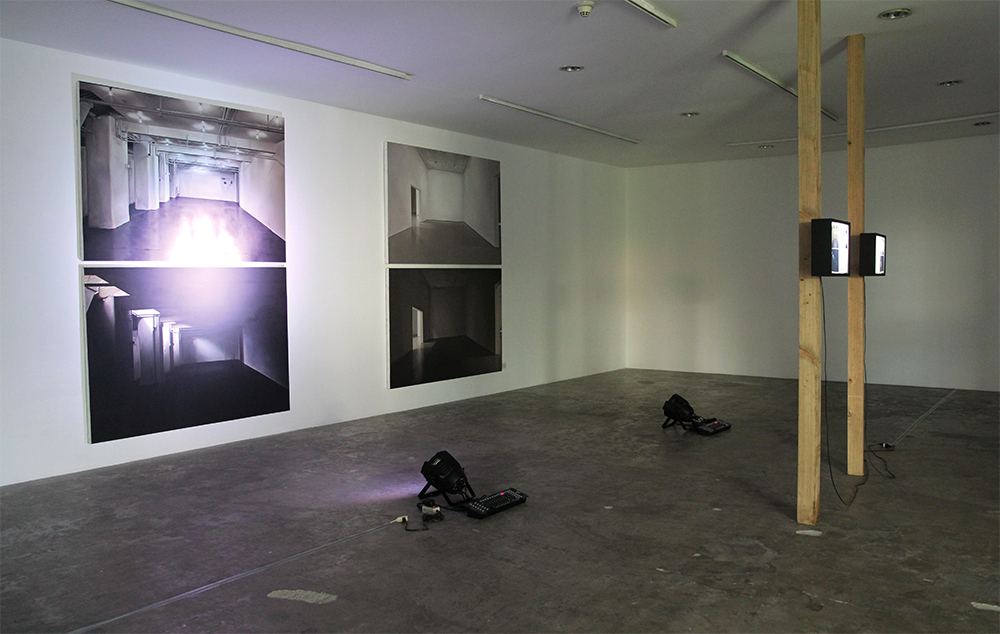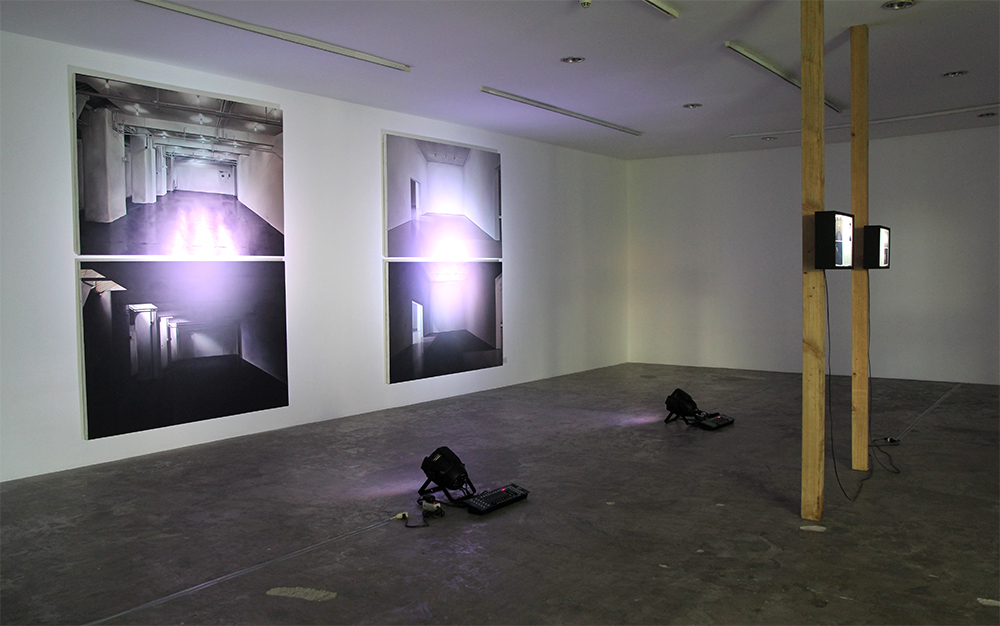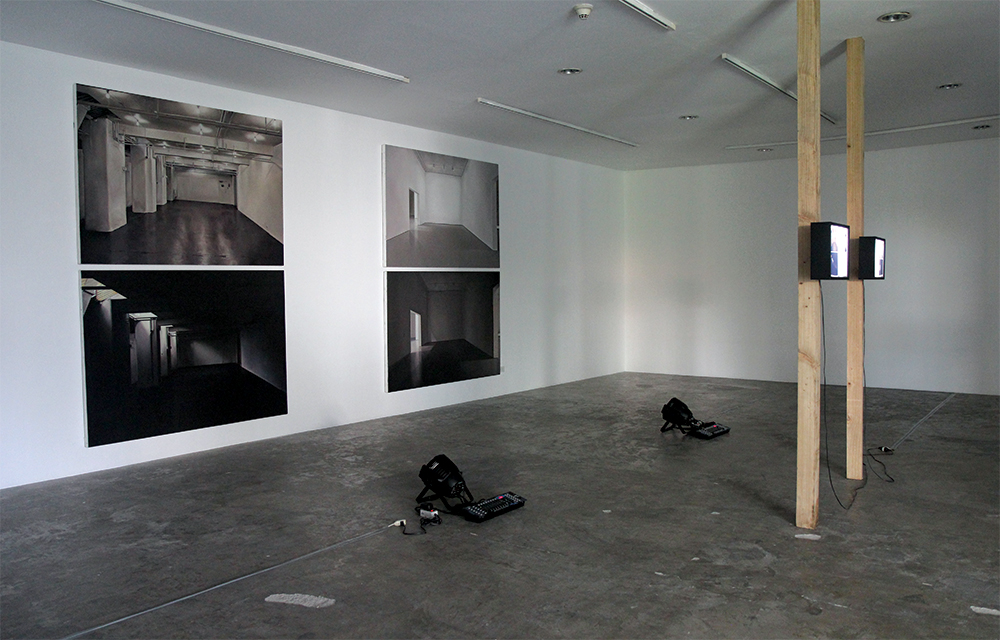The Lights Going On and Off
Annie Cabigting
21 June – 20 July 2014
Curated by
21 June – 20 July 2014

Annie Cabigting’s latest exhibition at MO_Space takes off from Martin Creed’s infamous Turner Prize winning work The Lights Going On and Off. Profoundly disarming in its sheer simplicity, it consisted of exactly what the title says—lights going on and off in an otherwise empty space. The light intervals varied each time the work was re-installed for different exhibitions throughout the years. It was re-created several times in various types of spaces, the quality and amount of light differed, the public’s reaction to it also ranged from critical acclaim to furious hate; what remained unchanged was that the lights all went on and off at a given time and space.
Cabigting focuses on two occasions, "Work 127: The Lights Going On and Off” and “Work 227: The Lights Going On and Off,” as depicted in photographs from two separate books on the most definitive or iconic artworks of our times. By combining painting, photography, and similarly programmed lights as in Creed’s installations, Cabigting mirrors in various ways the discrepancies between the two versions—one with lights going on and off every 30 seconds in an unnamed empty basement-like space in 1995, and a later version with shorter light intervals of 5 seconds in an empty white room at the Museum of Modern Art in New York in 2007.
Much of Creed’s work is characterized by restraint and repetition. He manipulates ‘things’ to ‘life,’ working with everyday objects such as ticking metronomes, all the bells in a city ringing together for three minutes, lamps that turn on and off, and doors and piano lids that open and slam shut. Sound is an important aspect of Creed’s work, being a musician at the same time an artist. His installations have been described as “musical compositions—a set of instructions performed like scores.” A stark contrast to the brash and grungy spectacles of other young British artists of his generation, his work is linked to the theatrics of an earlier time, particularly the minimalist 60s, and draws inspiration from the silent works of Carl Andre and John Cage.
Cabigting similarly acknowledges art history and uses it as a recurrent subject in the majority of her works. She has paid tribute to a number of significant visionary artists including Francis Bacon, Yves Klein, Mark Rothko, Frank Stella, Gordon Matta-Clark, Robert Motherwell, and Roberto Chabet, whose notorious work “Tearing Into Pieces” at the Cultural Center of the Philippines in 1973 was appropriated and transformed by Cabigting in her exhibition 100 Pieces at Finale Art File, for which she received the 2005 Ateneo Art Awards.
The role of photography is crucial in Cabigting’s practice—her paintings are exclusively based on photographs of artworks, either alone or being looked at by another viewer. The source of the photographs is at times disclosed; in this case, the inclusion of the two reference books that carry the quoted diptych images and captions that serve as the paintings’ titles. Enlarged and reproduced through a grid-by-grid manner, the images in her paintings are not direct representations of the artworks themselves, but systematic reconstructions of their photographic histories, continuously recalled and repeated.
About the Artist
About the Artists

Annie Cabigting (born in 1971) majored in Painting at the University of the Philippines. She has been publicly exhibiting her works since 2001. Her first solo exhibition, “100 pieces” (2005), was shown in Finale Art File’s space in SM Megamall, Mandaluyong. She is a recipient of the Ateneo Art Awards and her work was included in the Prague Biennale in Czechoslovakia. Her works have been exhibited in galleries and art fairs in Metro Manila, Antipolo, Singapore, Hong Kong, Kuala Lumpur, Jakarta, Tokyo, Berlin, Basel, Madrid, Beirut, and Milan.
Her work, which ranges from painting to installation, is known for questioning what constitutes art: the various aspects of producing, looking and privileging visual images throughout history. Her subject matter involves people viewing art. They highlight the importance of the viewer to an artwork, for they determine whether the object is an artwork. She paints these paintings in a photorealist style.
Related Exhibitions
About the Artists
About the Artist
Annie Cabigting (born in 1971) majored in Painting at the University of the Philippines. She has been publicly exhibiting her works since 2001. Her first solo exhibition, “100 pieces” (2005), was shown in Finale Art File’s space in SM Megamall, Mandaluyong. She is a recipient of the Ateneo Art Awards and her work was included in the Prague Biennale in Czechoslovakia. Her works have been exhibited in galleries and art fairs in Metro Manila, Antipolo, Singapore, Hong Kong, Kuala Lumpur, Jakarta, Tokyo, Berlin, Basel, Madrid, Beirut, and Milan.
Her work, which ranges from painting to installation, is known for questioning what constitutes art: the various aspects of producing, looking and privileging visual images throughout history. Her subject matter involves people viewing art. They highlight the importance of the viewer to an artwork, for they determine whether the object is an artwork. She paints these paintings in a photorealist style.

Related Exhibitions

Share

